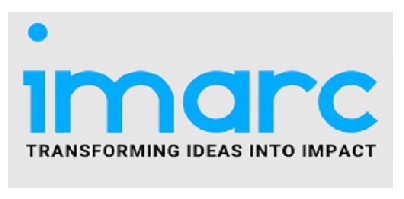Chemicals Industry Today
Carboxymethyl Cellulose Production Cost Analysis 2025: Competitive Landscape
Introduction:
Carboxymethyl Cellulose (CMC) is a widely used cellulose derivative, a water-soluble polymer obtained by chemically modifying natural cellulose (typically from wood pulp or cotton linters) with chloroacetic acid. It functions primarily as a thickening agent, stabilizer, binder, and emulsifier. Its versatility stems from its ability to form viscous solutions even at low concentrations, making it indispensable in diverse industries such as food (e.g., ice cream, sauces), pharmaceuticals (excipients), personal care products (toothpaste, cosmetics), detergents, and paper.
Setting up a Carboxymethyl Cellulose production plant involves a multi-step process. First, cellulose raw material undergoes alkalization with sodium hydroxide. This is followed by etherification, where the alkali cellulose reacts with sodium monochloroacetate in a controlled environment, often using organic solvents like isopropanol. The resulting crude CMC then requires extensive purification to remove impurities like sodium chloride, typically through washing and filtration. Finally, the purified CMC is dried, milled to the desired particle size, sieved, and packaged. Critical aspects include robust reaction control, efficient solvent recovery, and comprehensive wastewater treatment due to the chemicals involved.
IMARC Group’s report, titled “Carboxymethyl Cellulose Production Cost Analysis 2025: Industry Trends, Plant Setup, Machinery, Raw Materials, Investment Opportunities, Cost and Revenue,” provides a complete roadmap for setting up a carboxymethyl cellulose production plant. It covers a comprehensive market overview to micro-level information such as unit operations involved, raw material requirements, utility requirements, infrastructure requirements, machinery and technology requirements, manpower requirements, packaging requirements, transportation requirements, etc.
Carboxymethyl Cellulose Industry Outlook 2025
The Carboxymethyl Cellulose (CMC) is primarily driven by the burgeoning food and beverage sector, where CMC acts as a crucial thickening, emulsifying, and stabilizing agent in processed foods, dairy, and beverages. Furthermore, increasing urbanization and rising disposable incomes in India are boosting demand for packaged goods, personal care products, and pharmaceuticals, all of which widely utilize CMC. The versatility of CMC and a growing emphasis on sustainable and bio-based ingredients also contribute to its positive market outlook.
Key Insights for Carboxymethyl Cellulose Production Plant Setup
Detailed Process Flow
- Product Overview
- Unit Operations Involved
- Mass Balance and Raw Material Requirements
- Quality Assurance Criteria
- Technical Tests
Request for a Sample Report: https://www.imarcgroup.com/carboxymethyl-cellulose-manufacturing-plant-project-report/requestsample
Project Details, Requirements, and Costs Involved:
- Land, Location and Site Development
- Plant Layout
- Machinery Requirements and Costs
- Raw Material Requirements and Costs
- Packaging Requirements and Costs
- Transportation Requirements and Costs
- Utility Requirements and Costs
- Human Resource Requirements and Costs
Capital Expenditure (CapEx) and Operational Expenditure (OpEx) Analysis:
Project Economics:
- Capital Investments
- Operating Costs
- Expenditure Projections
- Revenue Projections
- Taxation and Depreciation
- Profit Projections
- Financial Analysis
Profitability Analysis:
- Total Income
- Total Expenditure
- Gross Profit
- Gross Margin
- Net Profit
- Net Margin
Speak to an Analyst for Customized Report: https://www.imarcgroup.com/request?type=report&id=18496&flag=C
Key Cost Components of Setting Up a Carboxymethyl Cellulose Plant
- Reaction & Processing Equipment: Specialized stainless steel reactors, blenders, centrifuges/filters, and dryers are critical due to corrosive chemicals and the need for purity.
- Raw Material Storage: Facilities for cellulose (wood pulp/cotton linters), sodium hydroxide, and sodium monochloroacetate, often requiring dedicated, corrosion-resistant tanks.
- Solvent Recovery System: Essential for processes utilizing organic solvents (like isopropanol) to minimize waste and reduce operating costs.
- Utilities: Robust power supply, water treatment, steam generation (boilers), and chilling/cooling systems for controlled reactions.
- Environmental Compliance: Significant investment in effluent treatment plants (ETP) for wastewater and air pollution control for chemical emissions.
- Civil Works & Infrastructure: Construction of chemical-resistant production buildings, warehousing, laboratories, and administrative areas.
- Quality Control Lab: Equipping a comprehensive lab for testing purity, viscosity, and degree of substitution of CMC.
- Technology Licensing/Engineering Fees: Costs for proprietary process know-how and detailed engineering design for optimal plant operation and safety.
Economic Trends Influencing Carboxymethyl Cellulose Plant Setup Costs 2025
- Raw Material Price Fluctuations: Prices of key raw materials like cellulose (wood pulp/cotton linters), caustic soda, and monochloroacetic acid are subject to global supply-demand dynamics and energy costs. Indian CMC producers are currently seeing a price increase for CMC itself.
- Energy Costs: CMC production, particularly drying and solvent recovery, is energy-intensive. Volatile electricity and fuel prices in India will directly impact both capital expenditure (for energy infrastructure) and ongoing operational costs.
- Growing Demand from End-Use Industries: Strong growth in India's food & beverage, pharmaceutical, and personal care sectors is driving demand for CMC, encouraging new plant investments to meet this need. This demand provides a strong justification for the initial outlay.
- Inflationary Pressures: General inflation impacting construction materials, specialized chemical-resistant equipment, and skilled labor wages in India will contribute to higher overall plant setup costs. Construction costs are expected to rise by 5-7% globally in 2025, with India experiencing similar trends.
- Environmental Regulations: Increasingly stringent environmental norms in India for waste water treatment and chemical emissions necessitate investment in advanced pollution control systems, adding to capital expenditure.
- Government Policies: While the Union Budget 2025 didn't have specific chemical industry measures, NITI Aayog has proposed incentives like operational expenditure subsidies for chemicals and development of chemical hubs, which could potentially offset some setup costs in the future.
Challenges and Considerations for Investors
- Raw Material Price Volatility: Fluctuations in the cost of cellulose (wood pulp/cotton linters), caustic soda, and monochloroacetic acid (MCA) significantly impact production costs. MCA, in particular, has seen rapid price swings.
- Intense Competition & Market Fragmentation: The global CMC market is moderately fragmented with many players, leading to competitive pricing pressures and the need for strong differentiation based on quality and application-specific grades.
- Substitution Risk: CMC faces competition from other hydrocolloids and thickeners like guar gum and xanthan gum, which might offer similar functionalities at competitive prices or with "clean label" advantages.
- Regulatory Compliance: Meeting stringent food-grade, pharmaceutical, and environmental regulations for CMC production and waste discharge adds complexity and cost, especially for purity levels above 95%.
- Technological Advancements: Continuous investment in R&D is required to develop new, more efficient production processes, enhance product properties (e.g., higher purity, better solubility), and explore sustainable raw material sources.
- By-product Management: The production process generates by-products (like sodium chloride and wastewater) that require efficient and compliant management, adding to operational expenses.
Buy Now: https://www.imarcgroup.com/checkout?id=18496&method=1911
Conclusion
This report aims to serve as a practical guide for entrepreneurs, investors, and industrial planners exploring opportunities in carboxymethyl cellulose production. By understanding the cost structure, market dynamics, and operational challenges, stakeholders can make informed decisions and devise sustainable strategies for entry and expansion in the sector.
About Us: IMARC Group is a global management consulting firm that helps the world’s most ambitious changemakers to create a lasting impact. The company excel in understanding its client’s business priorities and delivering tailored solutions that drive meaningful outcomes. We provide a comprehensive suite of market entry and expansion services. Our offerings include thorough market assessment, feasibility studies, company incorporation assistance, factory setup support, regulatory approvals and licensing navigation, branding, marketing and sales strategies, competitive landscape, and benchmarking analyses, pricing and cost research, and procurement research.
Contact Us:
IMARC Group
134 N 4th St. Brooklyn, NY 11249, USA
Email: sales@imarcgroup.com
Tel No:(D) +91 120 433 0800
United States: +1–631–791–1145
Share on Social Media



Other Industry News
Ready to start publishing
Sign Up today!








